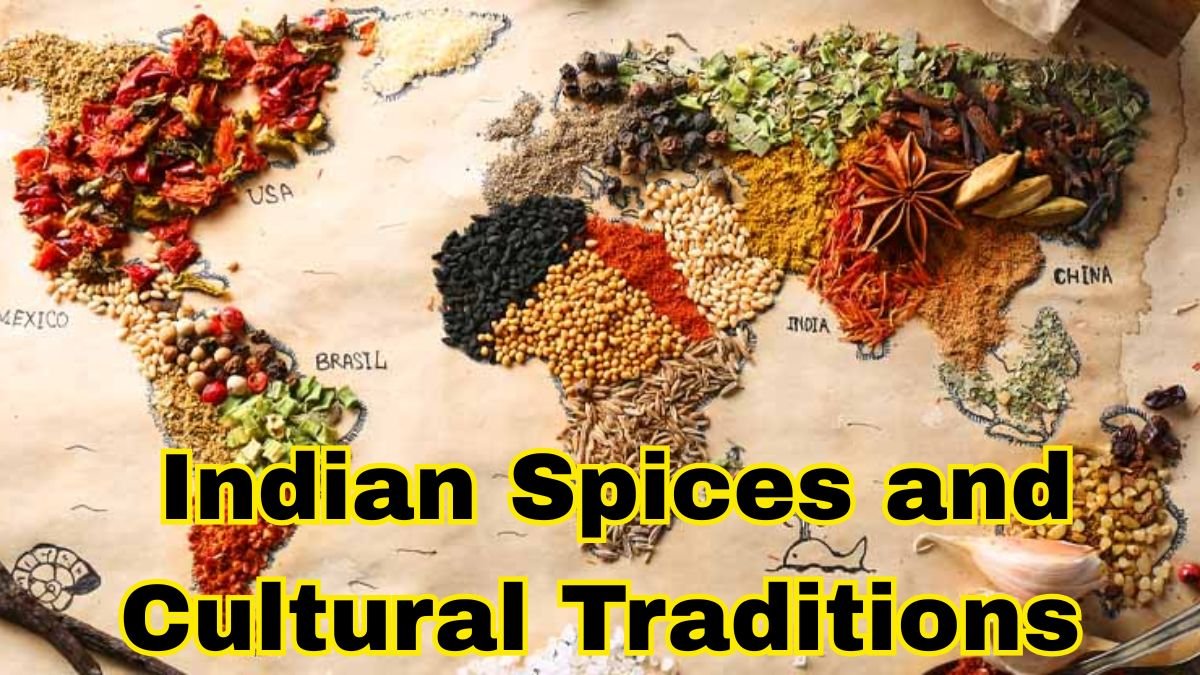India is not only known for its diversity, colors, and traditions, but also for its unique flavors and spices. If there’s anywhere in the world where we can find the most beautiful blend of flavor and tradition, it’s the Indian plate. Spices here not only enhance the flavor of food, but have also been a vital part of culture, Ayurveda, religious rituals, and lifestyle.
India is said to be known as the “Land of Spices.” For thousands of years, these spices have not only been an integral part of Indian cuisine but have also played a major role in the development of trade and civilization. Let’s explore how Indian spices have shaped our traditions and given our culture a new identity beyond taste.
The Importance of Spices Since Ancient Times
India’s association with spices is not new. Evidence of the use of spices dates back to the Indus Valley Civilization. Spices like black pepper, cinnamon, turmeric, and cardamom were used not only in cuisine but also in religious rituals, medicines, and beauty treatments.
Foreign travelers and traders—such as those from Greece, Rome, Arabia, and later Europe—were attracted to India’s spices. In fact, India’s spices were the reason for the establishment of trade routes and the beginning of maritime voyages across the world.
Spices: Beyond Taste, a Part of Tradition
Indian spices are not limited to enhancing the flavor of food; they are also deeply connected to life’s traditions and religious beliefs.
Turmeric – A Symbol of Purity and Health
Turmeric is considered auspicious in India. The turmeric ritual at weddings is a prime example of this. It is applied not only to brighten the bodies of the bride and groom but also as a symbol of protection from evil influences. In Ayurveda, turmeric is considered a natural antiseptic.
Saffron – A Combination of Luxury and Purity
Saffron is used in India, especially during festivals and religious offerings. A tilak of sandalwood and saffron is applied to the forehead during prayers. This is not only a symbol of faith but also of positive energy and purity.
Cardamom and Cloves – Part of Guest Hospitality
India has a tradition of “Atithi Devo Bhava.” Cardamom and cloves not only enhance the flavor of sweets and tea, but serving them to guests in betel leaves or sweets is a symbol of respect and honor.
Black Pepper and Ginger – Medicine and Lifestyle
Ginger tea or black pepper decoction for colds and coughs is a part of grandmother’s recipes in every household. These spices prove how deeply connected Indian food and health are.
Religious and Cultural Uses of Spices
Spices are also an important part of religious rituals in India.
- Camphor and cloves are used in puja to purify the atmosphere.
- A tilak of turmeric and sandalwood symbolizes blessings and purity.
- The use of spices in sweets during festivals like Holi and Diwali adds to the special flavor of the celebrations.
Spices have become symbols not just of taste but of religion, faith, and spirituality.
Spices and the Diversity of Indian Food
Every state and culture in India has its own cuisine, and spices play a unique role in each.
- Punjabi cuisine emphasizes hot spices, ginger, garlic, and onions.
- A tadka of curry leaves, coconut, and mustard seeds is the hallmark of South Indian cuisine.
- The intensity of red chilies and hot spices in Rajasthani cuisine makes the food distinctive.
- The use of panch phoron (fennel, fenugreek, mustard, nigella seeds, and cumin) in Bengali cuisine creates a unique flavor.
Spices from each region not only vary in taste but also reflect the culture, climate, and traditions of that region.
The Deep Connection Between Spices and Ayurveda
Ayurveda, India’s ancient system of medicine, considers spices not just flavors but also medicines.
- Turmeric – Helps reduce inflammation and heal wounds.
- Cumin – Improves digestion.
- Ginger – Improves body heat and immunity.
- Fenugreek – Helps with diabetes and heart disease.
This demonstrates that there has been no distinction between food and medicine in Indian culture. The philosophy of “food is medicine” is a gift of our spices.
Spice Trade and Indian Identity
History bears witness that Indian spices were the attraction that drew the world to India. European travelers like Vasco da Gama and Columbus came to India in search of spices. Spices became a symbol of India’s prosperity and glory.
Even today, Indian spices are exported worldwide and spread the identity of Indian food across the globe.
Relevance of Spices in the Modern Era
Even though today’s generation is drawn to fast food and ready-made spices, the importance of traditional Indian spices remains the same.
- The demand for organic spices is growing rapidly.
- Traditional beverages like masala chai, turmeric latte, and ginger-honey drinks are now becoming popular internationally.
- In the age of health and fitness, people are turning back to spices.
Conclusion
Indian spices are not just a taste, but a symbol of tradition, culture, health, and history. The ritual of turmeric, the sweetness of cardamom, ginger tea, and the aroma of saffron—all these together enrich the Indian lifestyle.
Spices are the thread that binds India’s cuisine, tradition, and culture together. This is why India is still called the land of spices.
Indian spices and traditions—they are not just a heritage of the past, but also an inspiration for the future.

